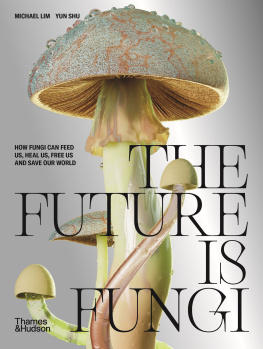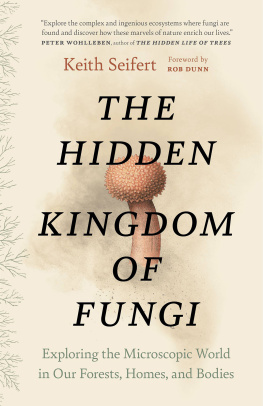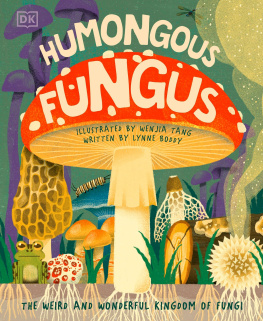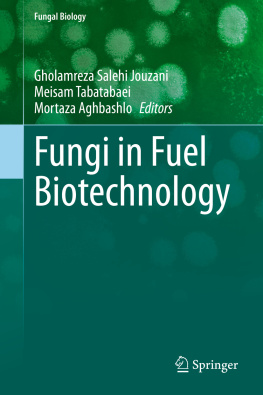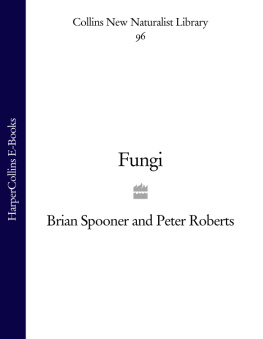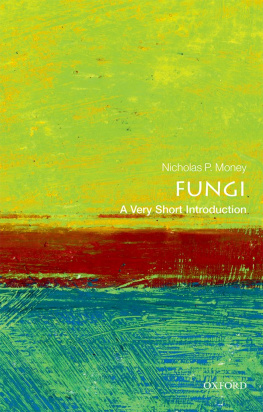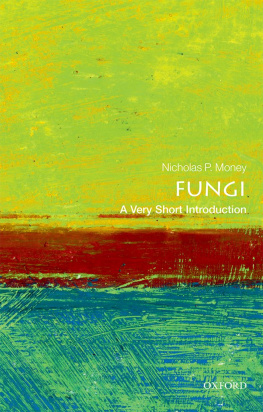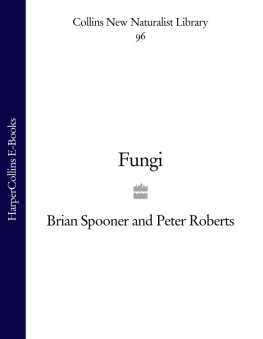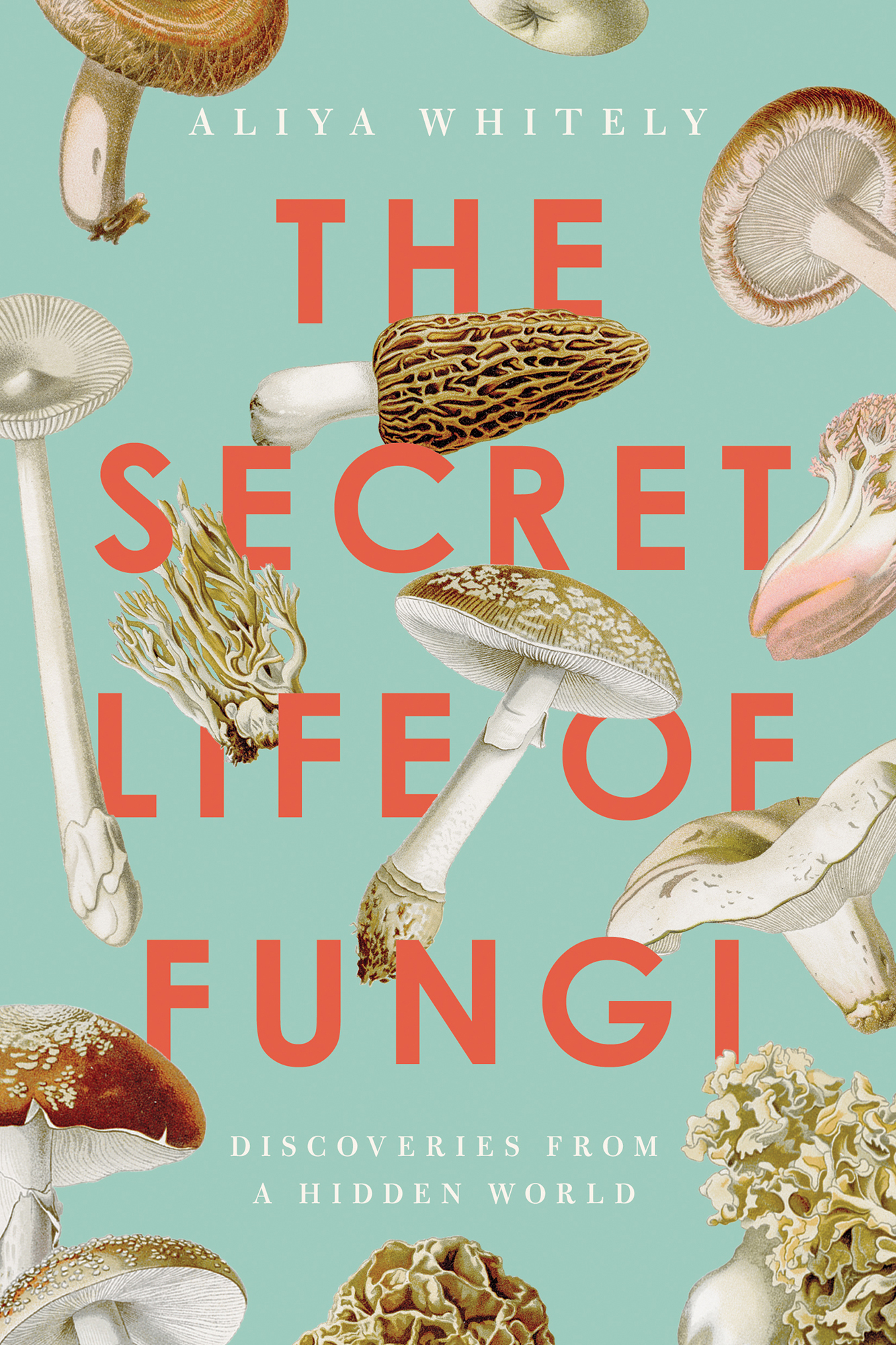Contents
Guide
Aliya Whitely
The Secret Life of Fungi
Discoveries from a Hidden World
THE SECRET LIFE OF FUNGI
Pegasus Books, Ltd.
148 West 37th Street, 13th Floor
New York, NY 10018
Copyright 2021 by Aliya Whitely
First Pegasus Books cloth edition September 2021
All rights reserved. No part of this book may be reproduced in whole or in part without written permission from the publisher, except by reviewers who may quote brief excerpts in connection with a review in a newspaper, magazine, or electronic publication; nor may any part of this book be reproduced, stored in a retrieval system, or transmitted in any form or by any means electronic, mechanical, photocopying, recording, or other, without written permission from the publisher.
ISBN: 978-1-64313-785-8
Ebook ISBN: 978-1-64313-786-5
Jacket design by Faceout Studio, Spencer Fuller
Jacket art by Getty Images
Distributed by Simon & Schuster
www.pegasusbooks.com
For my father
Introduction
W e were always walking.
We walked along the Devon coast, or in the woods, as soon as my legs were long and strong enough to take me. My father always had his camera. He wanted to capture something of the bright sights we saw: painted fishing boats jostling in the harbour; the vivid, flashing feathers of the robin or the blue tit; or the tall wildflowers of the open fields, campion pink and poppy red, and the buttercups shining face turned up to the sun.
I preferred Exmoor after the rain: damp, dank browns, slabs of stone, and old, twisted tree trunks. The strange shapes that sprang on them, around them, between them.
When I was first given my own camera I was delighted, but I soon discovered I had no skill for it. I hadnt yet developed a sense of what makes a good photograph. I wasnt drawn to the things that adults learn to appreciate as beautiful, or eye-catching. Instead I tried to capture the essence of the moor, snapping the rocks, the trees, the tough grasses and the suspicious sheep. And I remember I took photos of fungi, small and slimy, or scattered over rotting wood. I had been given one inviolable command dont touch but I loved to look at them.
They were not a pretty view. They were something else. They could be flat and smooth, almost shiny, or creased in texture, like folded paper. They could look bold, defiant, in the way their caps reared up from their stems, or they could be a mess of rotting material from which insects crawled and snails oozed.
I posted my first rolls of film at the local shop and waited for the photographs to be developed and returned. I remember my excitement, and my disappointment, when I opened the envelope and discovered Id captured only blurred, indistinguishable images. There was some secret to that world that could not be caught on camera at least, not by me. Still, I kept trying. I wanted to understand it.
I wonder, now, how much understanding springs from connection. Its not possible to know a subject truly without seeing where it touches other fields of knowledge. Back then, I hadnt even realised that what I was photographing, searching out, were often mushrooms. Mushrooms, to me, came in punnets and could be found on 1970s supermarket shelves. They were called buttons: small, neat, in their place. The stems held specks of dirt. They had erupted from the soil; I knew that much. But I made no link between them and the bulbous growths on the trunks, or the pointed caps amid the dead leaves.
But then, we live in a world of connections we dont quite make. The roads cover the continents and plane trails criss-cross the sky. The internet creates incredible opportunities for communication, for togetherness, and yet there is such loneliness in the 7 billion of us. But we are all intimately linked, part of this one world, and fungi is one of the strongest glues that binds us. They can appear anywhere, from desert dunes to frozen tundra, and create anew from rotting matter. They can invade bodies and thoughts, and they can live under our feet or on them, between our toes or between our floorboards. They are unwelcome intruders or vastly expensive treats. Fungi are a diverse and difficult group to classify. At first naturalists thought they were sponges, or some other form of animal, possibly even worms. Often they were categorised as strange, unsettling plants. It has taken hundreds of years to reach the modern scientific definition, and study continues to bring new information to light. Theres still so much to learn about these secretive forms of life, including the tantalising question of how much they communicate with each other, and with many other organisms. Perhaps they are even trying to communicate with us.
The mushrooms I used to find on the moor were part of fungi that grew in darkness. They wound their way through the soil and found, in the earth, roots and bulbs and larvae and bacteria and life and death in many forms. Ive been fascinated by this for many years, and Im still taking my snapshots and trying to find out more than a handful of their secrets. I keep making small connections across fields of knowledge: geography, history, myth and fiction, science and culture. For each one Ive written about in this book there could be so many more; there are countless connections to make.
Fungi are not like us they are entirely, magically, something else. This is a glimpse into their incredible, surprising and dark secrets, and an insight into the secret fungal world: the eruption, growth and decay overhead, inside us and under our feet.
ERUPT
1 To Name, To Know
I ts the size of a saucer, with a pale, brownish cap, and an earthy smell that wafts up from where it sits in its soil-filled cardboard box. My friend and I, side by side, peek over the lip of the box and stare at it.
Theres a sense of the forbidden about being in this corner of the science classroom before the bell has even gone, but when we heard there was a poisonous killer thing placed next to the fume cupboard we had to come and see for ourselves. This doesnt look like a killer. Its not an object I can identify from theory, although I know what it is in a general fashion, of course. I ask the question anyway: What is it?
Its just a mushroom.
Biology is not my best subject. I can never seem to make the leap from the page to the body. We dont get to do many practical lessons in my school, but watching the teacher slice up an eye, earlier that term, has confused me. The leaking fluids obscured the textbook view, and the spongy quality of the eye under the knife left me squirming.
This mushroom is a corporeal object too, reminding me of that eye. It has a coarse, almost scaly texture to its flat cap, and the smell of it is strong, emanating from the box as if it is growing as we watch an active aroma of climbing damp and shifting soil. I tell my friend shes wrong. It cant be just a mushroom. Its something else. There should be a giant, impressive word for this squatting beast. I try on toadstool, but that doesnt seem right either. Im reaching at the limits of my language; I cant explain it to her, and we fall out over this semantic difference, and dont speak for weeks.


